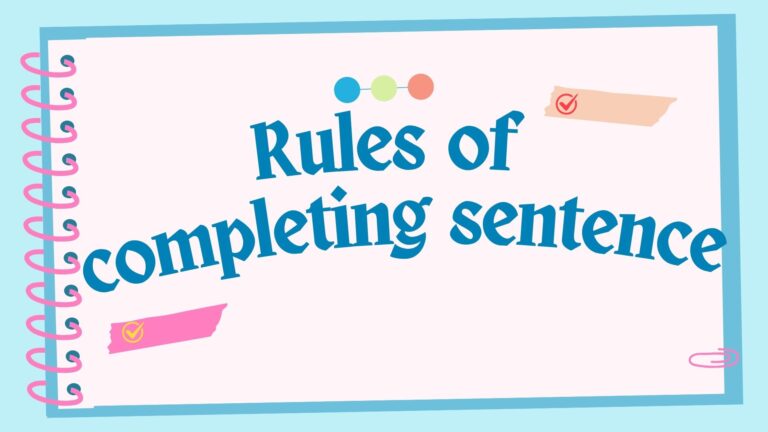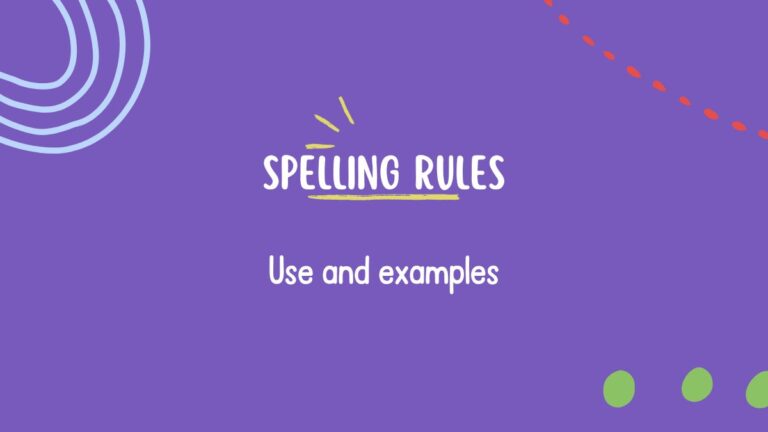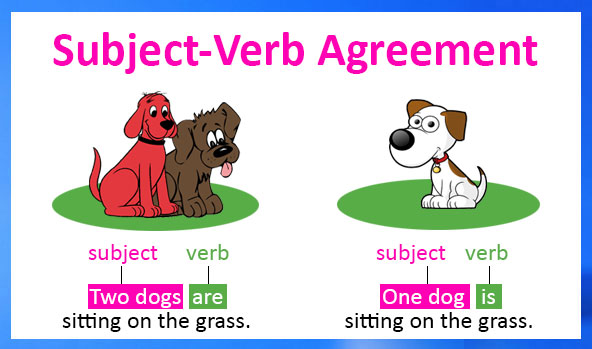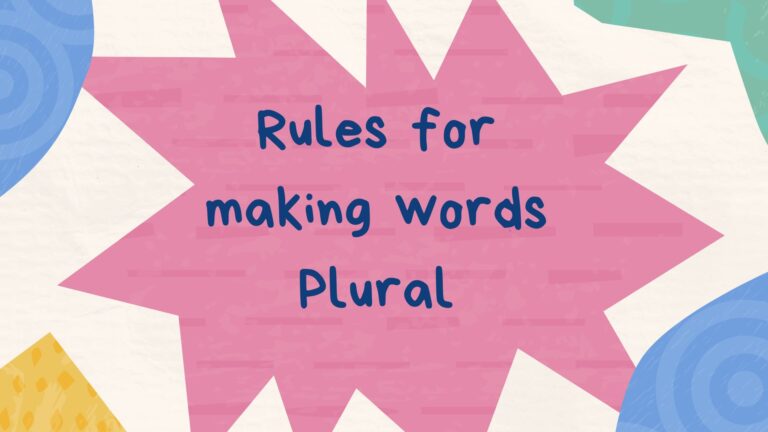20 Common Grammatical Errors in English
Introduction to Grammatical Errors:
Grammatical errors are common—especially for learners of English. These errors can affect the clarity of your writing and speech. Here, we’ll look at 20 of the most frequent grammatical errors in English, along with examples and corrections to help you avoid them.
1. Subject-Verb Agreement Errors
One of the most frequent grammatical errors is incorrect subject-verb agreement. The verb must agree with the subject in number (singular or plural). For instance, in the sentence “She go to school,” the subject “she” is singular, so the verb should be “goes,” not “go.” Always make sure your verbs match the subject’s number and person.
She go to school every day. (Wrong)
She goes to school every day. (Right)
2. Incorrect Verb Tense
Using the wrong verb tense can confuse the reader about when an action happened. For example, saying “I am go to the market” mixes the present continuous form. The correct sentence is “I am going to the market.” Consistency in tense ensures your message is clear and accurate.
I am go to the market. (Wrong)
I am going to the market. (Right)
3. Wrong Use of Articles
Articles like “a,” “an,” and “the” can be tricky. Use “a” before consonant sounds and “an” before vowel sounds. For example, “a honest man” is incorrect because “honest” begins with a vowel sound. The correct form is “an honest man.” Proper article usage enhances sentence clarity.
He is a honest man. (Wrong)
He is an honest man. (Right)
4. Double Negatives
Using two negatives in a sentence can create confusion or the opposite meaning. For instance, “I don’t need no help” technically means you do need help. The grammatically correct version is “I don’t need any help.” Avoid double negatives to keep your meaning clear.
I don’t need no help. (Wrong)
I don’t need any help. (Right)
5. Misuse of Apostrophes
Apostrophes are used for contractions (it’s = it is) and possession (John’s book). Many people confuse “its” (possessive form of “it”) and “it’s” (contraction of “it is”). For example, “Its raining” is incorrect; the correct sentence is “It’s raining.” Always double-check your apostrophes.
Its a nice car. (wrong)
It’s a nice car. (Right)
6. Incorrect Comparative Forms
Comparatives should follow proper form. For most one-syllable adjectives, use “-er” (e.g., taller), and for longer adjectives, use “more.” Saying “more taller” is redundant. The right sentence is “She is taller than her sister.” Using the correct comparative form ensures grammatical accuracy.
She is more taller than her sister. (Wrong)
She is taller than her sister. (Right)
7. Confusing “Your” and “You’re”
“Your” is a possessive pronoun, while “you’re” is a contraction of “you are.” Mixing them up changes the meaning. For example, “Your amazing” should be “You’re amazing.” This mistake is very common in informal writing and texts but should be avoided in formal contexts.
Your amazing! (Wrong)
You’re amazing! (Right)
8. Sentence Fragments
A sentence fragment is an incomplete thought. For example, “Because I was late” is a dependent clause that needs an independent clause to complete the idea. The correct version is “I missed the bus because I was late.” Make sure your sentences express complete thoughts.
Because I was late. (Wrong)
I missed the bus because I was late. (Right)
9. Misplaced Modifiers
Misplaced modifiers confuse readers about what is being described. In “She almost drove her kids to school every day,” it sounds like she rarely drove them. A clearer sentence would be “She drove her kids to school almost every day.” Proper placement makes your sentence logical.
She almost drove her kids to school every day. (Wrong)
She drove her kids to school almost every day. (Right)
10. Wrong Prepositions
Prepositions like “in,” “on,” “at,” and “to” often cause confusion. For instance, “He is good in English” should be “He is good at English.” Prepositions can change the meaning of a sentence, so it’s essential to learn their correct usage.
He is good in English. (Wrong)
He is good at English. (Right)

11. Incorrect Plurals
Some nouns have irregular plural forms. Saying “childs” instead of “children” is grammatically wrong. Always check the correct plural form. Learning common irregular plurals can help avoid this mistake in both writing and speaking.
Childs are playing outside. (Wrong)
Children are playing outside. (Right)
12. Using “Me” Instead of “I”
Many people mistakenly say “Me and Sarah went shopping.” The correct sentence is “Sarah and I went shopping.” When the pronoun is the subject of the sentence, use “I.” This is a common spoken English mistake but should be corrected in writing.
Me and John went to the store. (Wrong)
John and I went to the store. (Right)
13. Incorrect Use of “Less” vs. “Fewer”
“Fewer” is used with countable nouns, and “less” with uncountable nouns. So, “less people” is incorrect because “people” is countable. The correct phrase is “fewer people.” Understanding the distinction improves precision in communication.
There are less people today. (Wrong)
There are fewer people today. (Right)
14. Using “Then” Instead of “Than”
“Than” is used for comparisons, while “then” refers to time. Saying “My car is faster then yours” is incorrect. The right form is “My car is faster than yours.” Mixing these up is easy but can lead to unclear or misleading writing.
My car is faster then yours. (Wrong)
My car is faster than yours. (Right)
15. Confusion Between “Who” and “Whom”
“Who” is a subject pronoun, while “whom” is an object pronoun. For example, “Who did you talk to?” should formally be “Whom did you talk to?” Although “who” is often used in conversation, knowing the rule helps in formal writing.
Who did you talk to?(Wrong)
Whom did you talk to? (Right)
16. Repeating the Subject
Repeating the subject leads to redundancy. Saying “My sister she is very kind” is incorrect. The right form is “My sister is very kind.” Avoid unnecessary repetition for smoother and more professional writing.
My brother he is a teacher. (Wrong)
My brother is a teacher.(Right)
17. Using “A lot” as One Word
Many people write “alot,” but it’s not a word. The correct form is “a lot.” Though common in informal use, this mistake should be avoided in formal writing. Always remember it’s two separate words.
Alot of students were late. (Wrong)
A lot of students were late. (Right)
18. Wrong Use of “Since” and “For”
“Since” refers to a starting point, and “for” refers to a duration. Saying “I’ve lived here since five years” is incorrect. The correct version is “I’ve lived here for five years.” Using the wrong word confuses timelines.
I have been waiting since three hours. (Wrong)
I have been waiting for three hours. (Right)
19. Dangling Participles
A dangling participle occurs when the subject of the sentence is unclear. For example, “Walking through the park, the flowers looked beautiful” makes it seem like the flowers were walking. The corrected version is “Walking through the park, I saw the beautiful flowers.”
Walking through the forest, the birds were singing beautifully. (Wrong)
Walking through the forest, I heard the birds singing beautifully. (Right)
20. Wrong Use of “Affect” and “Effect”
“Affect” is usually a verb meaning to influence, while “effect” is usually a noun meaning result. Saying “The weather will effect our plans” is incorrect. It should be “The weather will affect our plans.” Learning the difference avoids common writing errors.
The weather will effect our plans. (Wrong)
The weather will affect our plans. (Right)
What are the most common grammatical errors in English?
Common grammatical errors include subject-verb agreement, incorrect verb tense usage, misplaced modifiers, and improper pronoun references.
Are there specific rules for subject-verb agreement?
Yes, subjects and verbs must agree in number; singular subjects take singular verbs, while plural subjects take plural verbs.
What is a run-on sentence, and how can I fix it?
A run-on sentence occurs when two independent clauses are improperly joined. You can fix it by separating them with a period or a semicolon.
Why is proper punctuation important in avoiding grammatical errors?
Proper punctuation clarifies meaning, indicates pauses, and helps structure sentences correctly, reducing the likelihood of misunderstandings.
What is the difference between “its” and “it’s”?
“Its” is a possessive pronoun indicating ownership, while “it’s” is a contraction for “it is” or “it has.”
How can I improve my grammar skills over time?
You can improve your grammar by reading regularly, practicing writing, studying grammar rules, and seeking feedback from knowledgeable sources.





